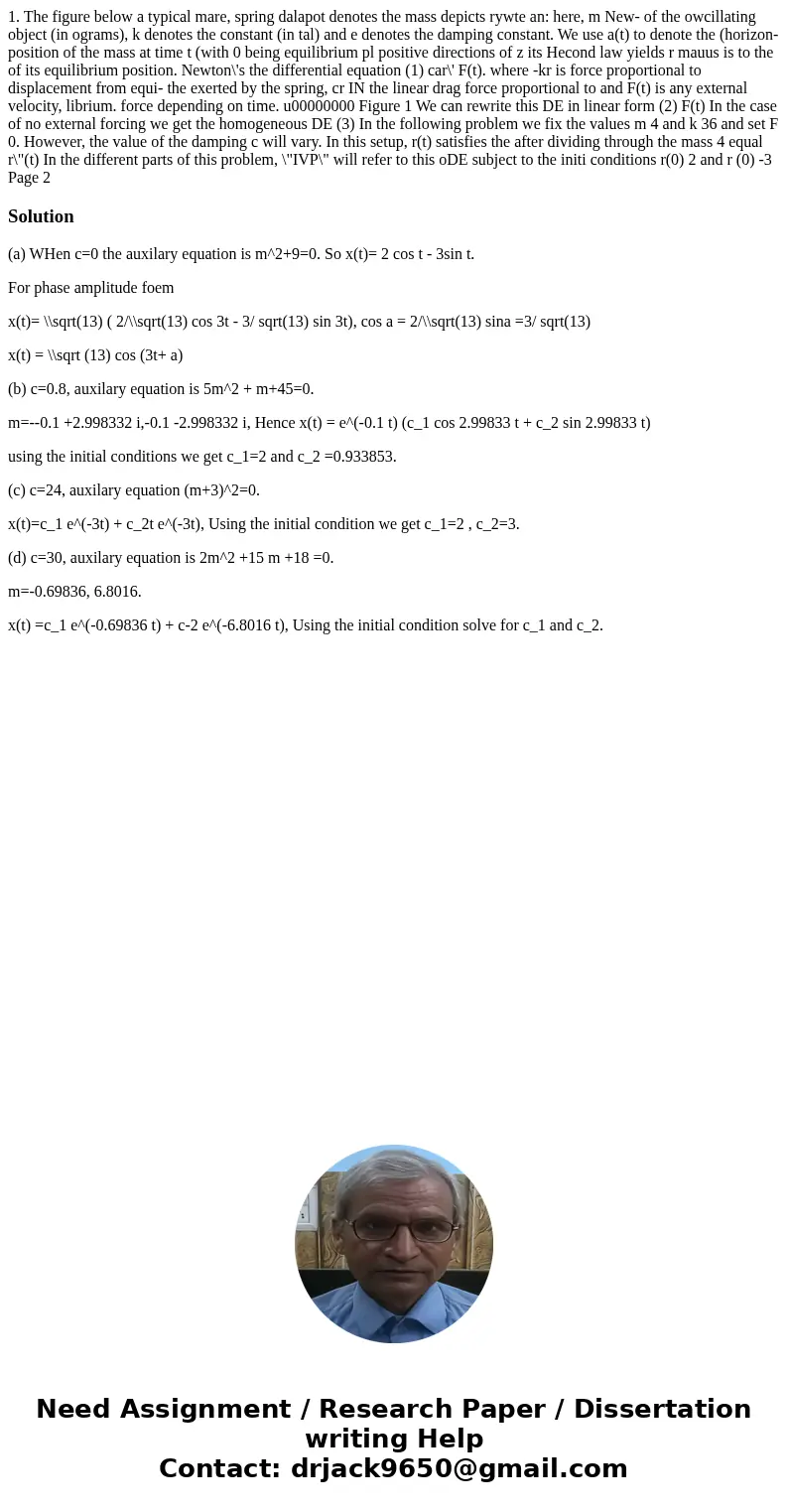1 The figure below a typical mare spring dalapot denotes the
1. The figure below a typical mare, spring dalapot denotes the mass depicts rywte an: here, m New- of the owcillating object (in ograms), k denotes the constant (in tal) and e denotes the damping constant. We use a(t) to denote the (horizon- position of the mass at time t (with 0 being equilibrium pl positive directions of z its Hecond law yields r mauus is to the of its equilibrium position. Newton\'s the differential equation (1) car\' F(t). where -kr is force proportional to displacement from equi- the exerted by the spring, cr IN the linear drag force proportional to and F(t) is any external velocity, librium. force depending on time. u00000000 Figure 1 We can rewrite this DE in linear form (2) F(t) In the case of no external forcing we get the homogeneous DE (3) In the following problem we fix the values m 4 and k 36 and set F 0. However, the value of the damping c will vary. In this setup, r(t) satisfies the after dividing through the mass 4 equal r\"(t) In the different parts of this problem, \"IVP\" will refer to this oDE subject to the initi conditions r(0) 2 and r (0) -3 Page 2 
Solution
(a) WHen c=0 the auxilary equation is m^2+9=0. So x(t)= 2 cos t - 3sin t.
For phase amplitude foem
x(t)= \\sqrt(13) ( 2/\\sqrt(13) cos 3t - 3/ sqrt(13) sin 3t), cos a = 2/\\sqrt(13) sina =3/ sqrt(13)
x(t) = \\sqrt (13) cos (3t+ a)
(b) c=0.8, auxilary equation is 5m^2 + m+45=0.
m=--0.1 +2.998332 i,-0.1 -2.998332 i, Hence x(t) = e^(-0.1 t) (c_1 cos 2.99833 t + c_2 sin 2.99833 t)
using the initial conditions we get c_1=2 and c_2 =0.933853.
(c) c=24, auxilary equation (m+3)^2=0.
x(t)=c_1 e^(-3t) + c_2t e^(-3t), Using the initial condition we get c_1=2 , c_2=3.
(d) c=30, auxilary equation is 2m^2 +15 m +18 =0.
m=-0.69836, 6.8016.
x(t) =c_1 e^(-0.69836 t) + c-2 e^(-6.8016 t), Using the initial condition solve for c_1 and c_2.

 Homework Sourse
Homework Sourse